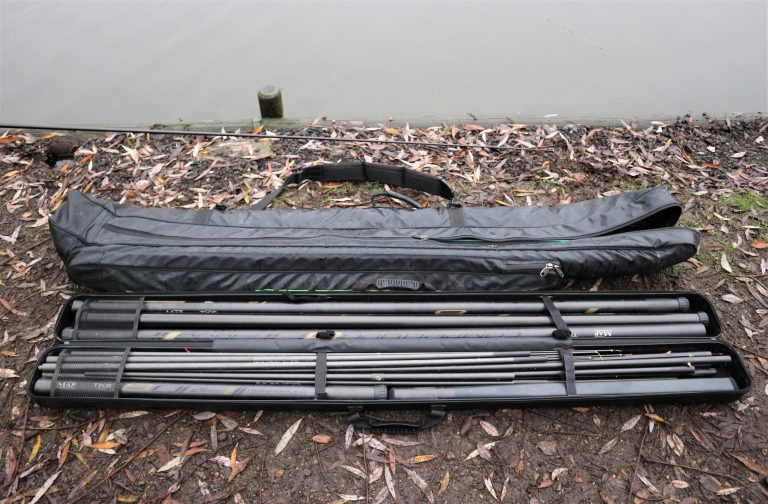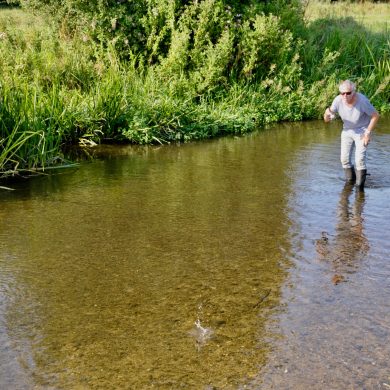NEVER ENOUGH
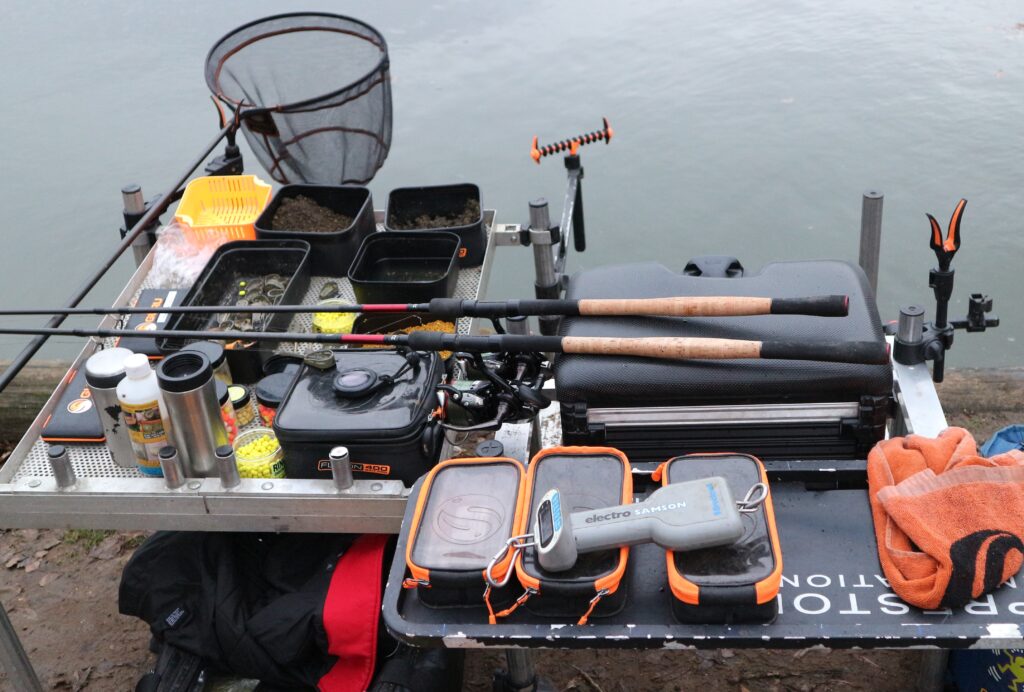
We might think we have ample fishing kit, but when something new is released, or someone is spotted using an interesting item, doubts can set in. In the never-ending quest to keep improving results, I’m sure we all like to keep up with the Jones’s and don’t want to miss out. I’m always interested in what other anglers are using anyway, due to my product development work, which makes me keen to keep track of what’s happening. Some new things can suck you in, but there is some innovation that helps make fishing a better experience and catch you more fish. A good example for me is robust and virtually invisible fluorocarbon, which has improved my results dramatically. Highly visible hollow plastic tips are another big step forward in pole, waggler and river floats, making them a lot easier to see. Larger items like luggage, seat boxes, rods, reels and poles are always evolving and need constant watching.
SHIFTING IT
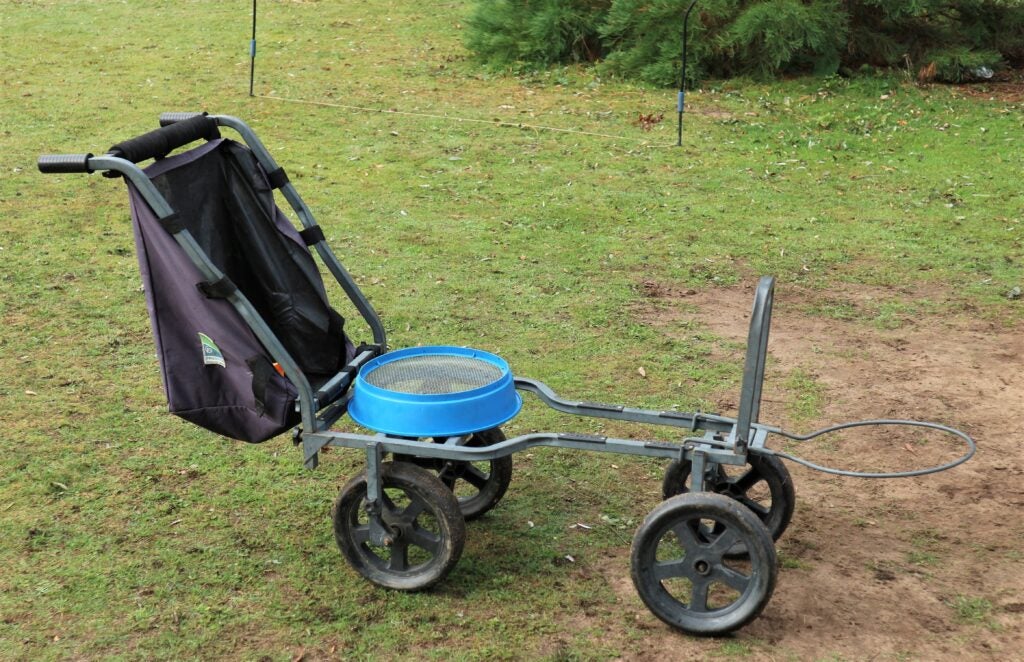
The humble fishing trolley is gradually dying out, being replaced by two and four wheel barrows that can lug so much more gear around. I’m still shuffling around with my ancient Boss trolley, which used to convert into a compact platform, back in the days when seat boxes were less versatile. If I eventually invest in something more substantial, I think it will be a four-wheeler like this Preston one, or the MAP version that has the ability to extend as you gradually accumulate even more items of gear. One thing I have learnt over the years is never to opt for pneumatic tyres with any products like this. They work fine transporting all your stuff to far away swims, but are not so good at getting it back when they get punctured. Solid rubber wheels are much safer and last a lot longer. Note the distance measuring sticks in the background of the accompanying photograph. Lots of anglers use these now, particularly when feeder fishing long range.
MOVING WATER
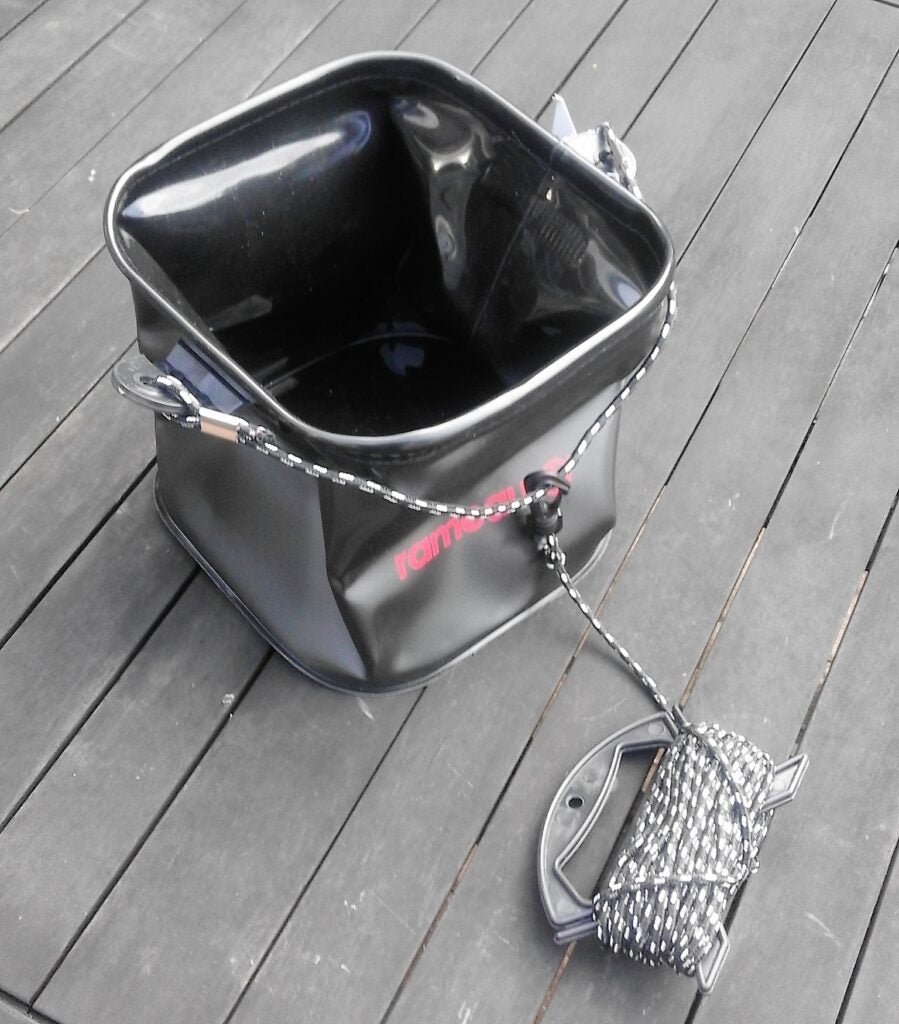
I was developing a range of gear for a big Continental tackle company when they sent me this EVA water bucket and rope. I enquired why anglers would need this, when surely a bait box would do a similar job? I’ve always got any water I need by pushing a three pint tub out in my landing net. But it seems, with all the fancy fishing stations many anglers use these days, dropping a bucket on a rope is a much more popular thing to do. It turned out this simple device is a massive seller under several big brands. I suppose a small bucket holds more water for wetting groundbait and pellets, with enough left over to park on a bait tray to keep your hands clean. EVA containers like this have become widely used, with unperforated bait box versions and lidded designs for storing accessories like feeders, pole cups, bait droppers and fishing tools. Standard bait boxes used to be good for jobs like this, but EVA has become much cooler to be seen with.
HARD CASES
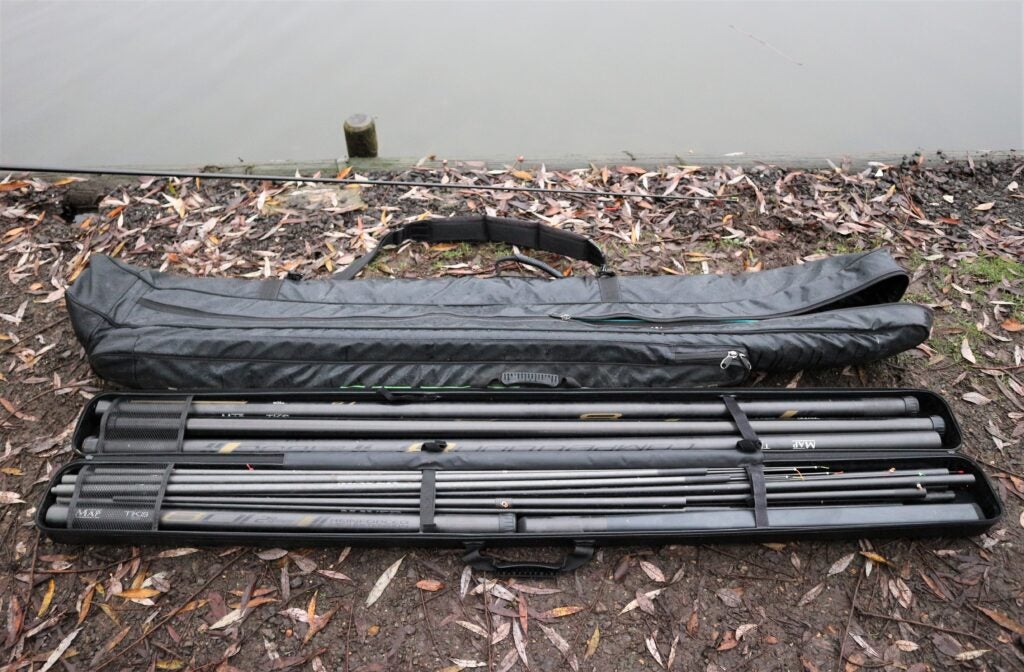
The hardcase concept has moved on from basic ready-style rod holdalls, with several companies marketing these tough pole storage boxes. The main pole, plus extensions, half sections and numerous top kits can be neatly packed inside. Most importantly, apart from saving space in already bursting rod holdalls, this new system makes it a lot easier to pick out what you need for different applications. It’s also handy having enough space to cram in spare number 4 and 5 sections, which are important for deeper venues, items you really don’t want to forget. If you invest in one of these and previously used a smaller top kit hardcase, that can still be utilised alongside. I had the Drennan version that took around 15 assorted top kits, but now I find I can use it to protect and transport spare un-tackled rods. It takes two float and two quivertip models. Four rods in one sleeve saves around 50% of space compared to what rod tubes take up.
REACHING FURTHER
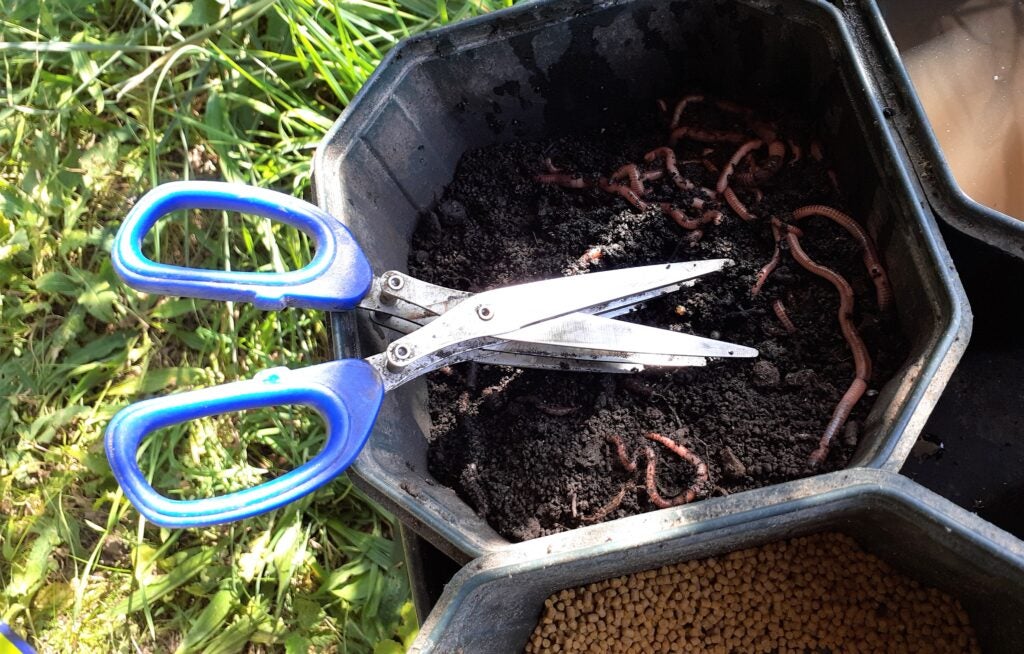
Some basic items of tackle don’t often get the chance to be critically assessed, they just get used a lot, doing a passable job. That was the case for me with chop worm scissors, providing they had multi blades and were sharp enough. But then one day I was mulching up some bait in a medium-sized pole cup and got to wondering why most chop scissors were on the short and stubby side. This made it harder getting at bait properly in smaller feed cups. I was working on a range of fishing tools at the time, so I asked the sourcing manager of the company in question if he could get longer-bladed chopping scissors. These samples turned up, and although they are a bit bulkier than most designs, they have turned out to be a good thing. The elongated handles are less severe on your fingers when chopping lots of bait, while the longer blades operate and reach better inside various size pole pots and cups. In this case bigger was a good move.
DROPPER LOGIC
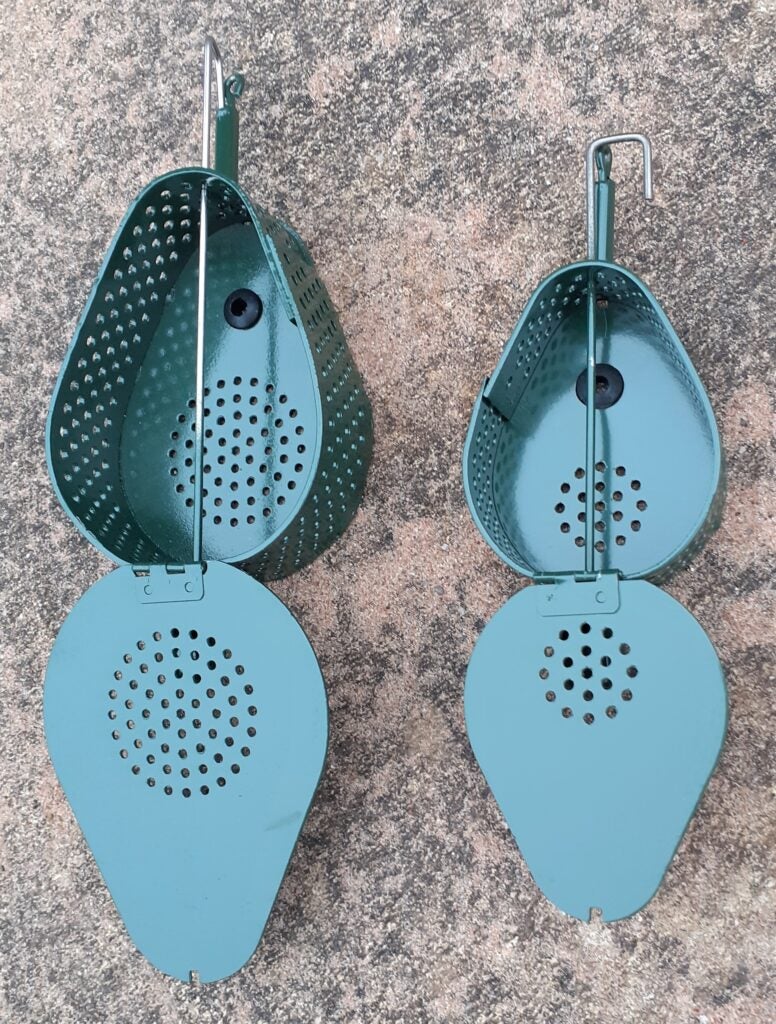
I needed some new bait droppers. Although some might think this is an old-fashioned way of getting bait hard on the bottom, anglers are still using these feeding devices on powerful rivers. I was quite surprised how many different designs were available, a bit of a minefield really. Doing some research on the internet revealed most plastic models were too light and in some cases very fragile. Stories of bait release doors falling off didn’t impress. I decided to closely inspect what’s on offer by visiting a local tackle shop, which excels in stocking lots of interesting accessories many of the chain stores don’t bother with. They had a good selection, but some of the metal mesh versions were poorly made. Just cheap copies of traditional round droppers that didn’t look like they would last ten minutes. In the end I settled for these rough and ready Dinsmore’s tear drop shaped metal versions. Heavy and built like a tank, but they do the job well enough.
PASTE POTS
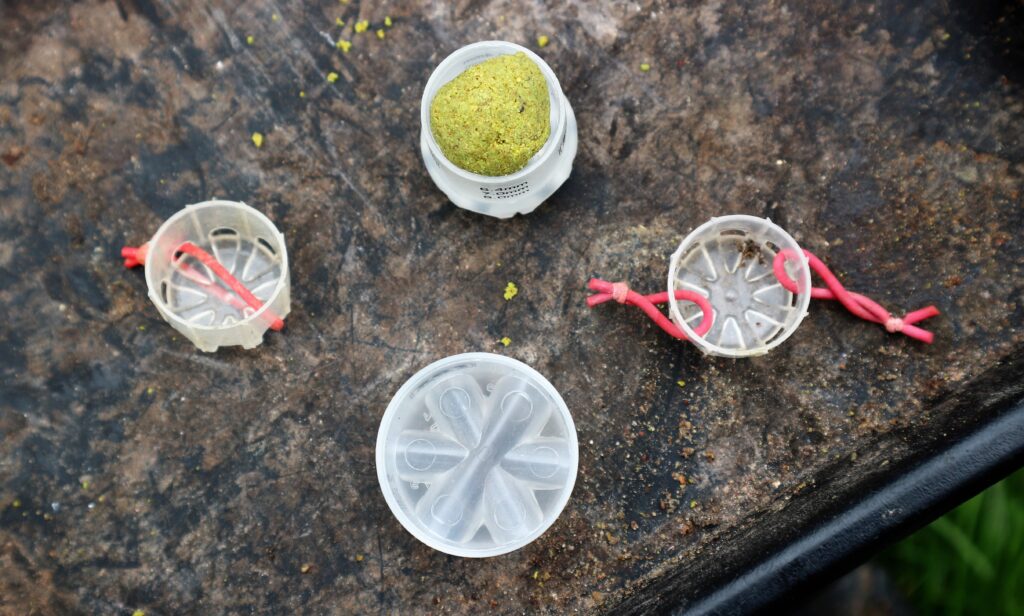
The problem with small commercially available Cad-style pots is they can’t be positioned a decent way down the pole, for those occasions when you want to ship out soft paste. So, I made up my own from caps that are supplied on some types of bottled water. The clear plastic ones I used already had perforations in their sides, just requiring short lengths of pole elastic to be threaded and looped either side. This allowed the small cups to be anchored lower down top kits, which meant paste rigs could be shipped out easily, before turning the pole over so soft hook baits gently exited without falling off the hook. This made things much smoother, compared to trying to ship out paste with the rig dangling free underneath the pole. If the super-soft bait touched the water or got bounced around, it fell off, slowing everything down. I’ve seen some anglers using commercially-produced pots set back just a short way, but that looks all wrong to me.
WEED BOOM
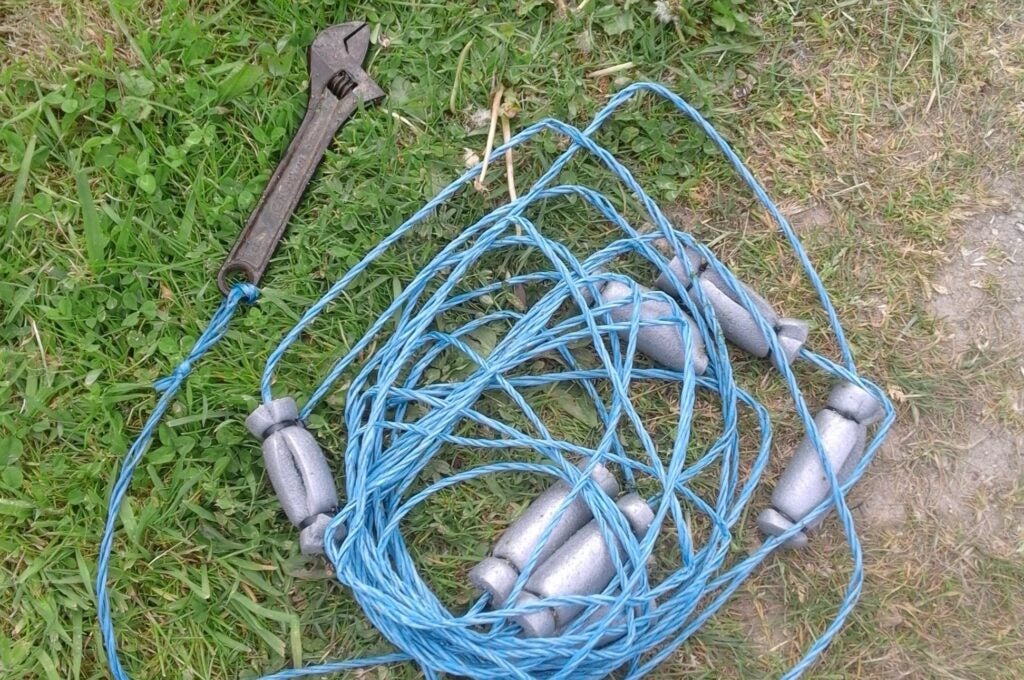
There I was struggling to get my pole rigs working properly, due to floating duckweed constantly drifting down the local canal. Another angler turned up and the first thing he did was throw a rope with a weight attached to its end across the 12m wide waterway. The rope had foam insulating tubes spread at intervals along its length, and within minutes the floating boom had stopped the weed problem. I thanked the guy, because as it turned out he was sitting on the correct side to keep my swim clear, as well as his own. Since then I have made my own floating weed boom, along similar lines, but with a heavy old spanner at its leading end. Once this has been hurled across the canal, a bank stick is used as an anchor on the towpath side. Obviously, this clever idea can only be implemented on waterways with no boat traffic, which was the case in this instance. The lone craft currently using the canal in question only operates on Sundays.
NEW LINES
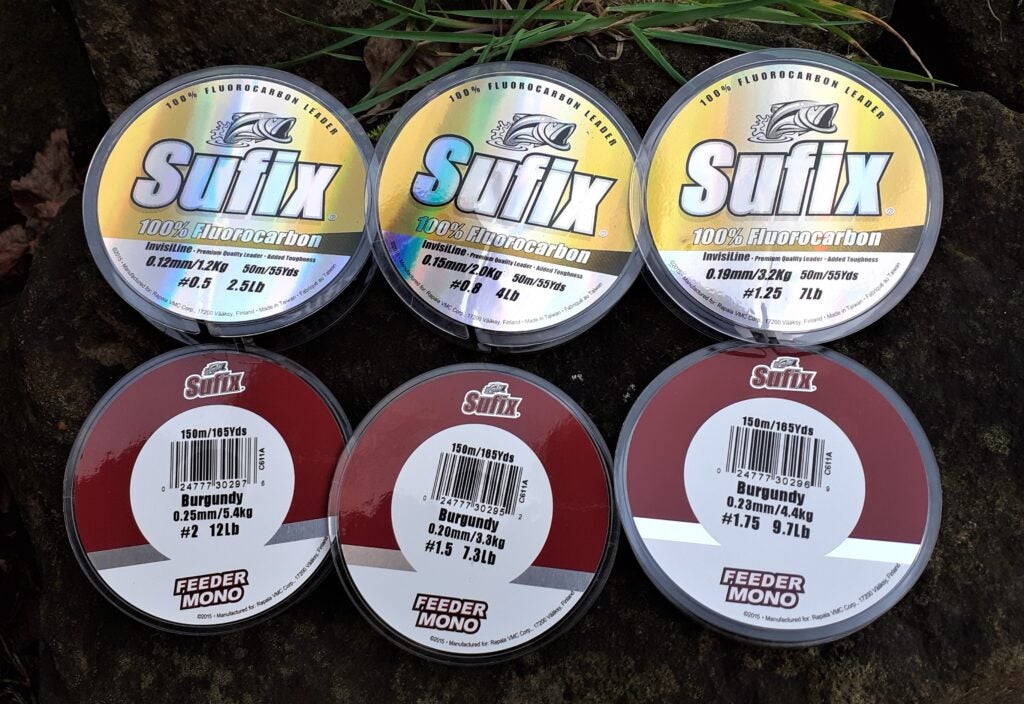
I’ve been doing some development work for my friends at Rapala, which owns the Sufix brand, well-known for its fishing lines and braids. When this new fluorocarbon and feeder mono comes on the market, it will probably be spooled differently, but the names are likely to remain the same. In both cases this is very impressive gear, which I’ve been field testing since last Autumn. The fluorocarbon has realistic breaking strains in relation to its diameters and is extremely robust. Apart from being virtually invisible in water, its stiffer nature is brilliant at preventing tangles when used as a hook length material, especially with all types of feeder tackle. It works particularly well when short hook lengths are required with in-line feeders or helicopter rigs. The burgundy-coloured feeder mono is a fast sinker with low stretch factor, perfect for most applications, supplied on 150m spools for those who like to hit the horizon. Two top products to watch out for.
PERFECT PUMP
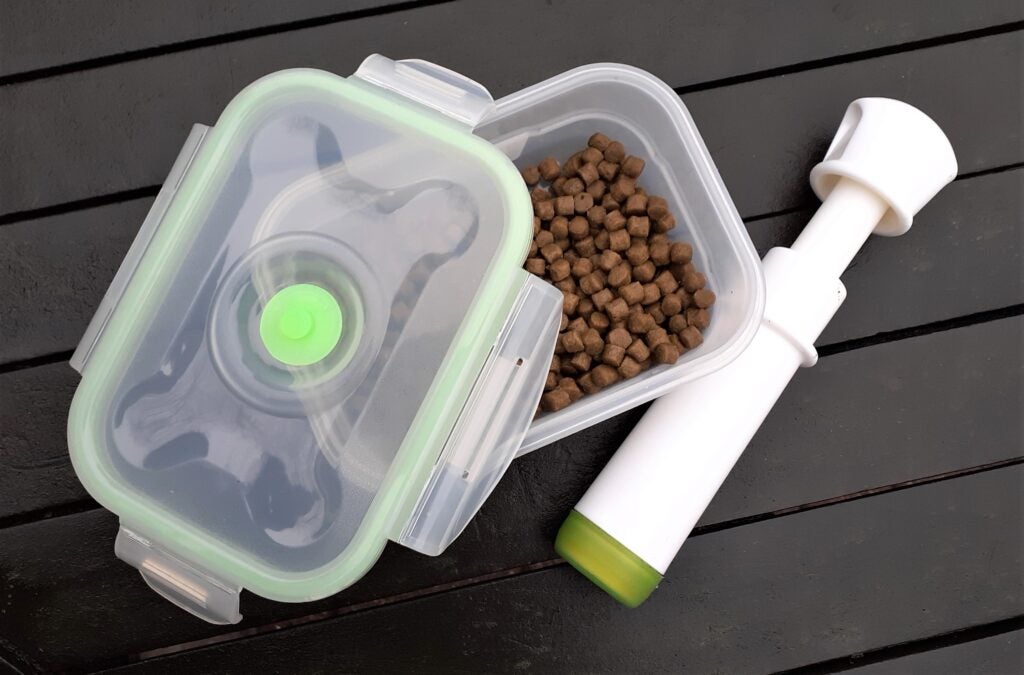
This is a slightly different type of pellet pump that caught my eye, probably originating from the food industry for extracting air before storing away perishables. The clip locking lid has a pressure valve, so the pump part can be fitted to this. However, after baits like expanders have been wetted and turned into sinkers, they can also be stored in the same container. Without the pump this is just like a non-perforated bait box, ideal for keeping prepared bait in a fridge, also for transporting it and parking on a bait tray when out on the bank. It only took a few goes with the pump to get floating expander pellets to sink, after they had been given just a minute to soak in water. After draining off and still in the compact rectangular-shaped tub, the secure lid went back on. In a matter of a few minutes everything was ready to go. The clear plastic container lets you see what’s inside, yet another bonus if you collect a few boxes for different pellet sizes.
SIMPLE SCALES
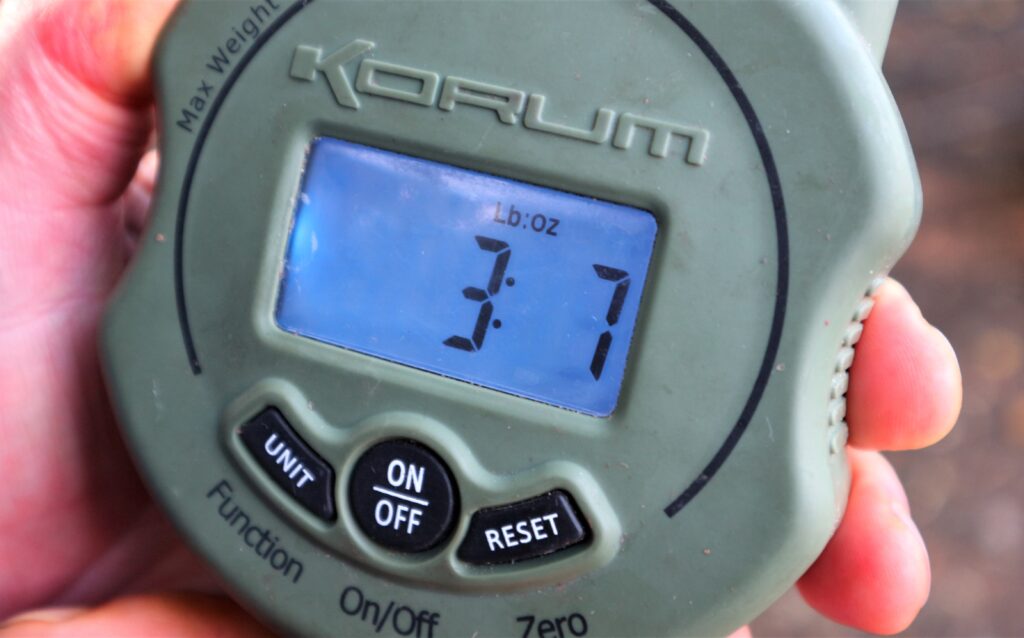
My old spring balance fishing scales had seen better days, so I decided to have a look at the new breed of digital models. Many were nicely compact but somewhat spoilt by being over-complicated, taking ages to reset if they needed zeroing. I don’t want to mess about like that when weighing individual fish or catches. Over-clever stuff like giving air temperature readings and the history of previous weigh-ins didn’t impress me. Several of the digital designs I tried took a minute or more to adjust when adding a light weigh net, which was ridiculous. In the end I discovered slightly larger dial-shaped scales tended to be simpler and faster to use, like this Korum model. No reason to stop and read instruction leaflets, because all you need to know is highlighted on the vital operating buttons. The body has a nice soft touch, non-slip finish and the display panel is backlit. These scales give useful options of weighing in either imperial or metric.
COMPACT REELS
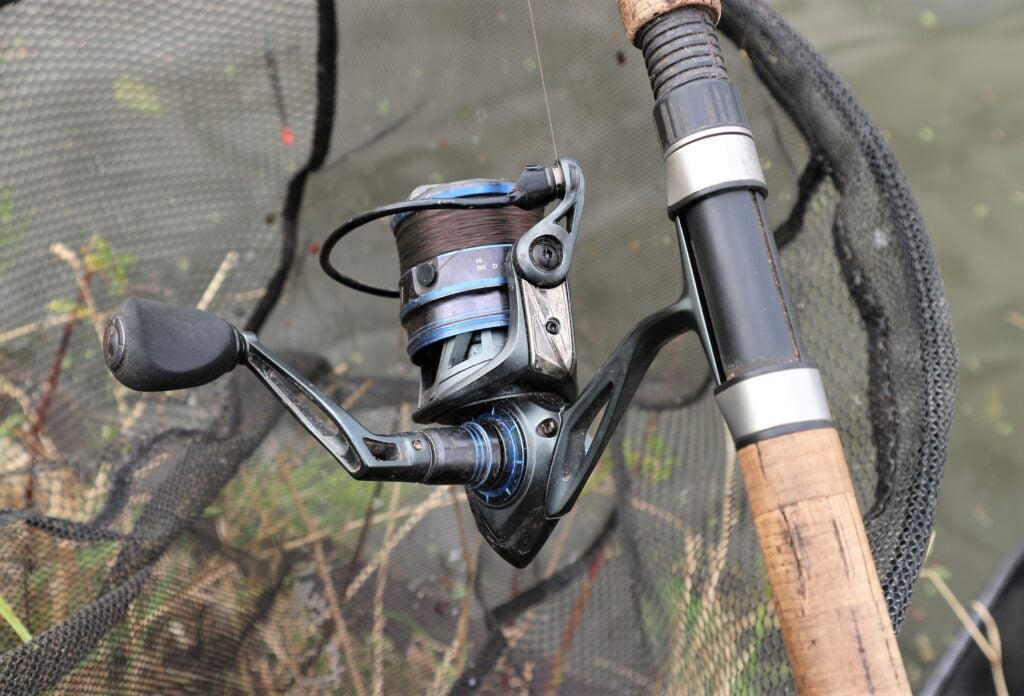
I’m hard to please when it comes to reels, after some torrid experiences. But I really like the two small 3000 Cadence CS10 Match models I got a couple of years ago. They are super-smooth with 10+1 ball bearings and wind in fast with 6.2:1 ratios. Weighing just 212g these light front-drag reels combine perfectly with lightweight carbon float rods. Line capacity on the two shallow alloy spools supplied with each product is 110m of 4lb mono, although you can just about cram on 110m of 5lb if something stronger is required. I mainly use 4lb sinking mono for waggler fishing and 3lb floating line for stick work. The CS10 reels deal superbly with both applications, casting light to medium float tackle out very smoothly and cranking in big fish without any hint of straining. The front lip of the spools is easy to reach to control line prior to casting or when trotting river swims, plus the snappy bale arm can be manually shut or wound into that position.

